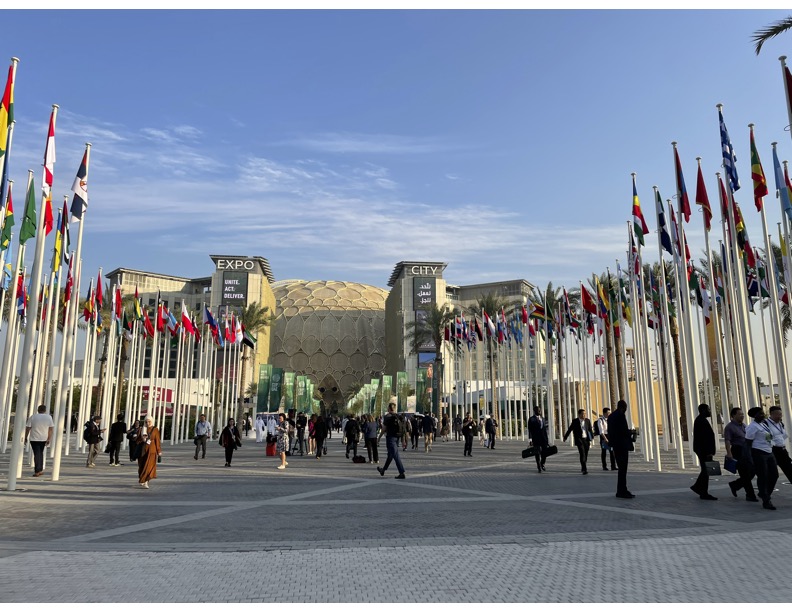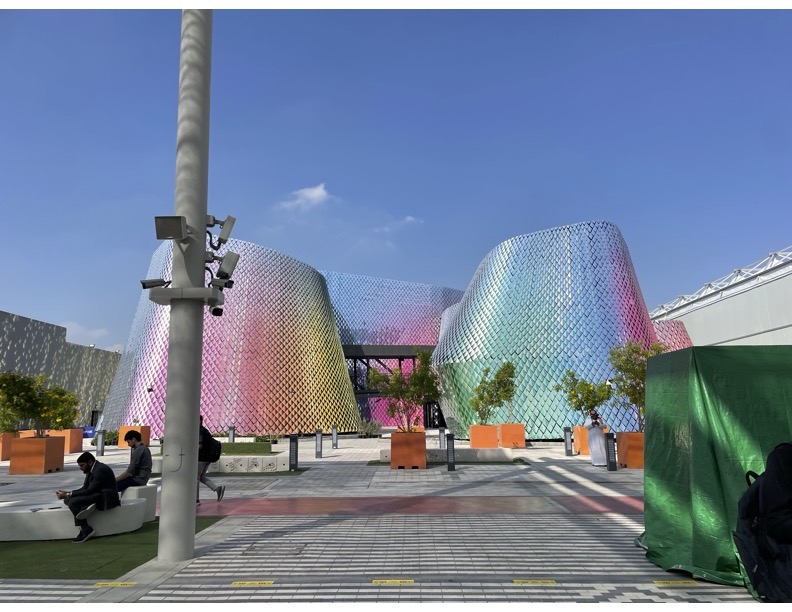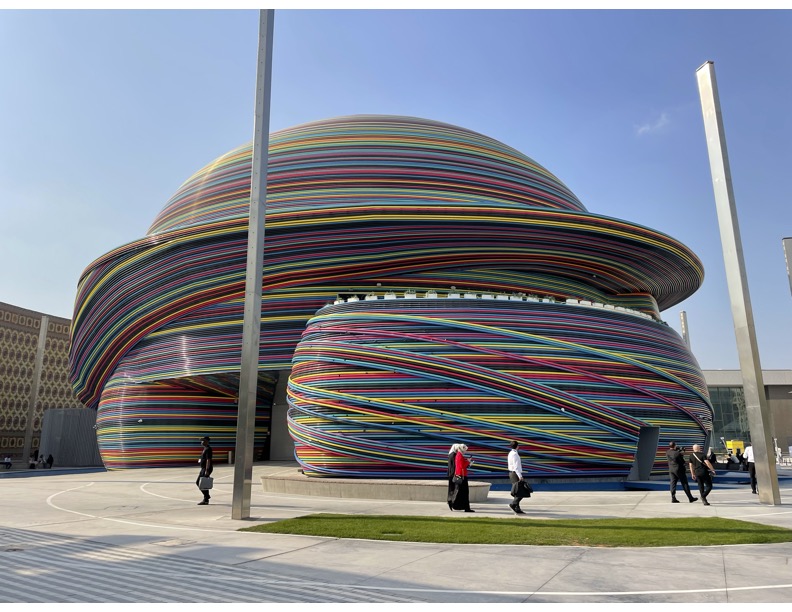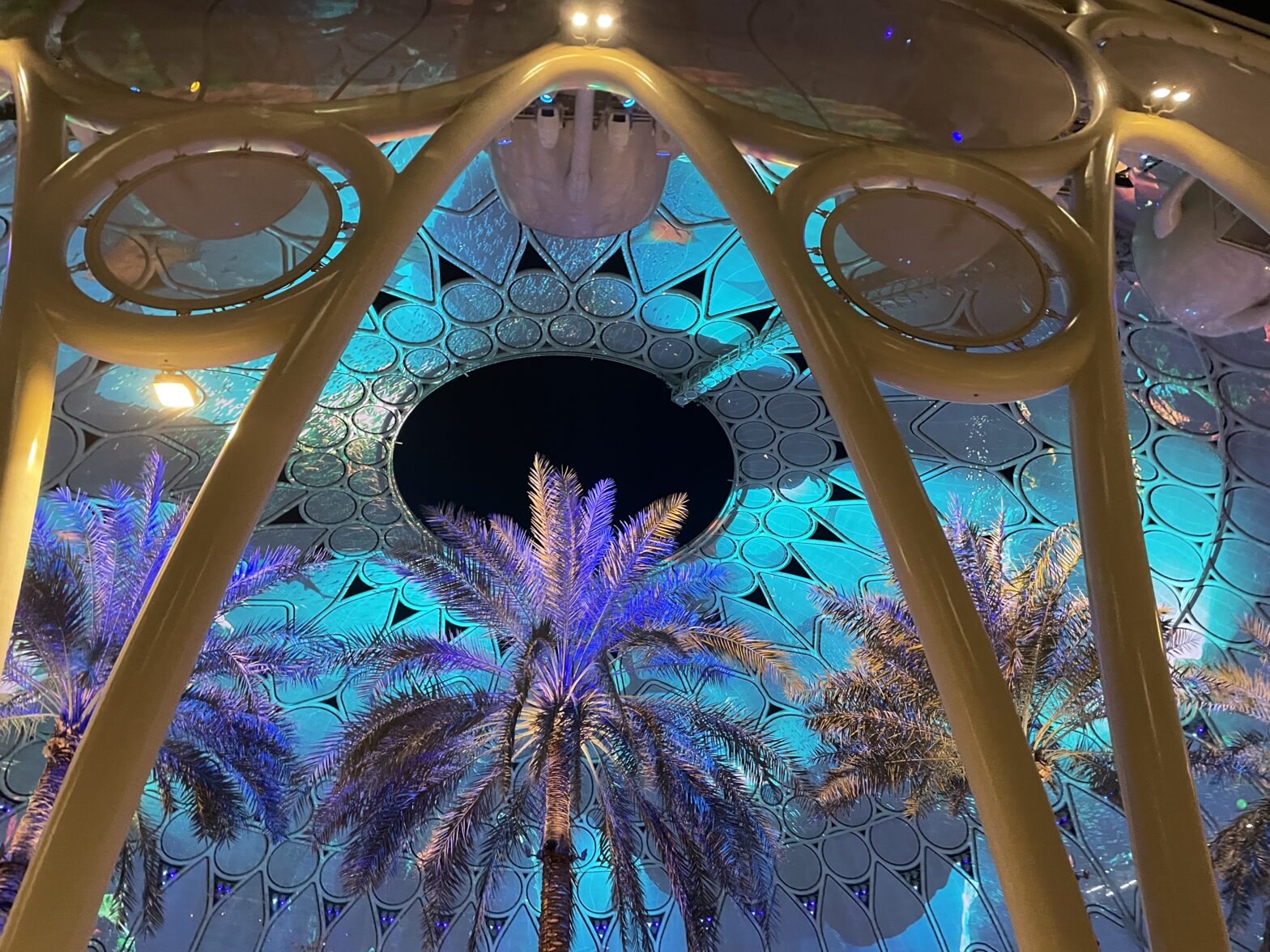By: April Kwan
The 2023 United Nations Climate Change Conference (COP 28), located in the United Arab Emirates this year, was hosted in Expo City Dubai. The space was divided into two distinct zones that provide access to different events, the Blue and Green Zone. Getting access to the Blue Zone required a United Nations Framework Convention on Climate Change (UNFCCC) accreditation as Parties, world leaders, media, and observers. The Green Zone was open to the public. Luckily, we had Blue Zone access badges every day of COP28, allowing us to experience and explore all it had to offer— and there was a lot.
Upon entering, it was instantly clear how massive the venue is, which makes sense because it has to accommodate around a hundred thousand COP28 attendees, a record high for COPs. If I didn’t know the stakes at COP28, I’d describe it as an adult amusement park, where lines were long and crowds were big (especially to get badges on the first day, certain food locations, and to wait for popular events) with constant excitement and action. Instead of amusement park rides, it’s compromised of formal negotiations, presidency events, country pavilions, and hundreds of side events that include panels, round tables, fireside discussions, cultural events and exhibits. There were always at least a dozen things going on, and crowds everywhere you looked. It was a pick-your-own-adventure experience on COP28’s hunting grounds. And it was awesome!
Beyond the events I attended I had become fond of wandering around during my downtime to explore all the nooks and crannies within Expo City Dubai. With this time, I could sit back and admire the organization of the space and the creative architecture at COP28.

Within the Blue Zone, a dome-like structure connected three massive aisles to bring the space together. Directly across from the dome in the middle aisle, was the entrance and exit. As you walk down the middle aisle upon entering COP28, you are greeted by massive national flags, a sign of unity and a commitment to togetherness. Alongside the three massive aisles, there were smaller walkways to connect pavilions, exhibits, and other buildings. Beyond the structures of utility used to host events, there were more creative structures that provided imagery and art to the serious nature of COP28 conversations.

At the end of one of the aisles stood a vibrant multi-colored building that instantly caught my eye. It was lined with square shaped tiles in a unique shape. My curiosity brought me inside where I realized it wasn’t set up to host any COP28 exhibits. The space wasn’t yet constructed to fulfill any role but had a quiet place to sit, and a bridge to connect the outside spaces together. Beautiful nonetheless.

Yet again another eye-catching moment for me occurred near the entrance/exit on one of the side aisles, where a brightly wrapped structure grabbed my attention. Its circular shape and distinct exterior creates an image of each colorful stand needed to uphold the building’s structure. After circling the building for an entrance, I realized there was none to the public.

The last of the initial striking structures of COP28 was a white, asymmetrical structure. To my surprise, the building hosted an artist’s exhibit, called “The Passage of Water”, used as a creative way to share about the world’s freshwater crisis. Through the use of the large ramp as a walkway, the audience ascends through smaller parts of the exhibit which build up to an interactive digital model sharing an artistic depiction of the increasing water shortage.
After more exploration of COP28 and Dubai, I noticed how the architecture at Expo City Dubai echos the signature buildings of Dubai itself. Both are impressive and filled with creative modernist architecture. It’s left me excited to explore more in the remaining days abroad.
